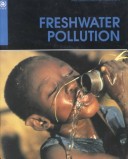UNEP/GEMS Environment Library
9 primary works
Book 6
Book 7
The Impact of Ozone-Layer Depletion
by United Nations Environment Programme
Book 8
Book 9
Book 10
Book 11
Global Biodiversity
by Brian Groombridge, M.D. Jenkins, and United Nations Environment Programme
Book 12
The Pollution of Lakes and Reservoirs
by United Nations Environment Programme
Book 13
The Impacts of Climate on Fisheries
by United Nations Environment Programme
Book 15


